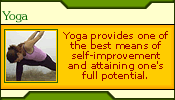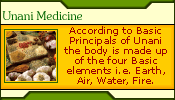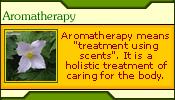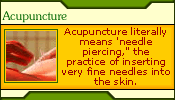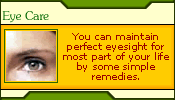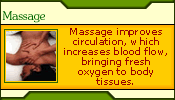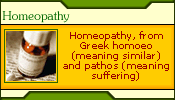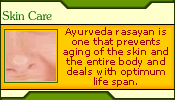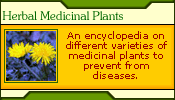| Survival is a basic instinct in human beings.
Everyone suffers from anxiety if survival is in jeopardy. And today
there are many people whose survival is threatened.
Some people, out of this need to survive, teach yoga. Perhaps in
the beginning, they thought that teaching yoga would be better for
society and they could do some good. And also they could earn some
money to survive.
Now in this world of survival there are many people with similar
ideas, and sometimes they copy others who are having success with
their ideas. So when more than one person is engaged in an action
for survival, there will be competition.
Now suppose in a particular city or town, for example, three persons
are teaching yoga. Naturally, there will be competition to get students.
The primary aim was to do something good, but survival is necessary.
So "paying students" are necessary, the more "paying
students", the better. So advertising is necessary. Now in
the normal methods of advertising, there must be something unusual
to attract the "paying students" to a particular teacher.
So teachers of yoga compete to teach something unusual to attract
more "paying students". The original motive was to do
good, but because of competition the motive takes on a subtle change.
It is no longer a service, it has become a business. And business
ethics are not always in harmony with yogic ethics. So now because
of competition to get "paying students" to guarantee the
teacher's survival, the teacher may teach some practices which may
be harmful to the students.
One of these very important practices which students are paying
yoga teachers (survivalists) to teach is pranayama, the science
of the control of the vital energy. It is unusual, so it is also
attractive. But a student who is attracted by the unusual is not
always a sincere student. Also because the student pays, he/she
expects that it is his/her right to learn it. Nowadays people often
demand their rights, carelessly ignoring their responsibilities.
Now to practice this subtle science there are some very important
rules to follow. The teacher, the guide, should be very cautious
so that the responsible student gets the correct process and does
it very precisely.
The first and most important rule in the practice of pranayama
is morality. The teacher should be sure that the student is a moralist
before teaching the process of pranayama. However since the teacher
is selling pranayama to the student, the morality of the teacher
is also in question. There are two aspects of morality--the personal
and the social. The student should be sure that the mind is moving
in the proper direction. If the mind has a momentum of selfishness,
then pranayama will only accelerate that momentum. Only the momentum
towards selflessness, sacrifice and unconditional love should be
accelerated.
The second rule is that the student should be a strict vegetarian.
Certain foods, stimulants and addictive substances activate the
glandular and nervous systems promoting undesirable behavior and
emotion. The student's will force is bombarded by so many extroversial
mental tendencies. If the power of the will force is increased,
then these extroversial mental energies will be carried by the will
force to a very rapid expression, perhaps even against the good
conscience of the student. The glandular and nervous system should
be made strong and not stimulated by narrow, contracting and selfish
emotions.
The third rule is that the mind should be fixed in a particular
point during inhalation and exhalation. This rule has been especially
emphasized for the last 3500 years. If one sees a candle burning,
three things are evident--the wick, the flame and the air moving
the flame. If the contact of the flame with the wick is broken by
too much air or wind, the flame dies. The student concentrates the
mind in a point (for example, like the wick of the candle). The
mind (for example, the flame of the candle) holds onto the point
of concentration (the wick of the candle) so that the mental tendencies,
emotions and past momenta of the mind (for example, the wind blowing
on the flame) do not break the focus of the mental force. So during
the practice of pranayama, it is beneficial that the student keep
the mind fixed in a point. That is why a competent yoga teacher
first instructs the student in the practice of concentration in
various psycho-physical centers.
The fourth rule is that the mind should have some absorbing idea
(mantra) which is associated with the flow of breath into and out
of the point of concentration. The student is not only breathing
air, he/she is also breathing vitality (prana). That vitality is
not his/her own vital energy, but it is the vital energy of the
Supreme Consciousness which controls it, the final goal of yoga
practice. The link between the mind, prana and Consciousness is
the mantra (the all absorbing Idea). As you can see the practice
of pranayama is a very precise science. These aspects should not
be omitted by the yoga teacher, but unfortunately, they are omitted.
Usually yoga teachers do not know enough about the psycho-physical
and psycho-spiritual aspects of pranayama to know how to properly
teach. Therefore harmful results are expressed. These harmful results
may be headaches, nose bleeds, high blood pressure or strong uncontrollable
emotions.
There are some minor rules which will make the practice of pranayama
more efficient:
- Pranayama should not be done directly after doing yoga postures.
There should be a gap of at least 45 minutes.
- It should not be done in a smoky or dusty room. If the student
is experiencing some strong emotions like anger, passion, etc.,
pranayama should be done after the emotion subsides.
- Persons doing pranayama should eat more fruits and drink milk
and/or take some oil (like olive oil) to maintain the lubrication
of the lungs.
- Pranayama should not be done if the student is having a headache.
Yoga practices are for spiritual elevation and social change, not
for escaping from the difficulties of life. They are the birthright
of everyone, but should be taught by a competent, service minded
teacher. It is not the same as aerobics, muscle training, athletics
or such psychic practices as hypnosis, autogenes training, etc.
Therefore it should be done seriously, regularly and sincerely with
a clear idea of the goal of life. It should not be taught by those
who see it as a means of survival, but by those who sincerely want
to lead others to the Supreme State of Unconditional Love.
All exercises increase the speed of breathing and blood circulation.
One can remain healthy forever if one the can exercise enough to
effect this increase. It is beneficial to breathe deeply during
the day. Inhaling and exhaling should be done as if one is panting.
One should take a long brisk walk every morning. An early morning
jog is also beneficial. A cold bath or a swim is also extremely
beneficial. Jumping and asanas have many benefits to offer.
Exercise for Cleaning Breath:
Teachers, leaders, and singers have to exercise their vocal chords
for long periods, their mouths become dry and they become tired
mentally and physically. The following exercise is very beneficial
for such people.
Technique: Inhale a deep and
complete breath. Retain the breath for a few seconds. Form the lips
as for whistling. Do not allow the cheeks to puff and inflate. Exhale
a little air quickly making a hissing sound. Retain the rest of
the breath. After a short while, exhale in the same manner. Repeat
four or five times. This exercise refreshes the performer.
Exercise for development of Intellect:
Intellectuals will benefit from this light exercise.
Technique: Stand erect. Inhale
complete breath and retain it. Spread both hands in front, keeping
them parallel to the chest. Bend elbows, place hands on the shoulders.
Contract the arm muscles so much that the hands close in a fist
and they should vibrate. Continue breath retention, the fists should
remain closed. Remaining in the same position and putting the same
pressure on the muscles bring the fists to the front, so that the
hands return to the original position. Return the fists to the shoulders.
Exhale from the mouth when it becomes hard to retain the breath.
Perform the breathing exercise. Repeat this three or four times.
This exercise improves memory; understanding becomes sharper and
the muscles of the arms, chest and back become strong. Blood will
be circulated in the brain.
Breathing Exercise for a Sweet Voice:
This is especially beneficial for musicians and such women who
have harsh, heavy voices.
Technique: Inhale slowly a complete
and long breath through the nostrils for as long as you can. Stop
the inhaled breath below the throat for a few seconds. Stretch the
mouth and the lips to the maximum. Exhale the entire breath like
an explosion. Perform cleansing breath to rest the lungs.
Exercise for expulsion of foul breath:
Impurities in the lungs sometimes cause the exhaled breath to become
foul smelling. Even the nose and the mouth acquire and emanate a
foul smell.
Technique: Stand erect, inhale
a complete breath and retain it in the lungs. Retain it as long
as possible. Open your mouth and exhale the air quickly. Perform
cleaning breath for resting the lungs. This exercise purifies the
lungs just as a laxative clears the stomach.
Exercise for Stimulating Circulation:
If the blood circulation in the body is not normal, a number of
diseases like paralysis, polio, etc. can be caused.
Technique: Stand erect. Inhale
a complete breath and retain it. Bend forwards slightly and grasp
a stick or a cane steadily and firmly. Gradually exert your entire
strength upon the grasp. Relax the grasp, return to the original
position and slowly exhale. Spend as much time as is possible, but
remember to perform all the three actions simultaneously. Repeat
several times. Remember to rest the lungs by performing cleaning
breath. This exercise can be performed without the help of a stick.
This exercise stimulates the circulation by driving the arterial
blood to the extremities and drums back the blood to the heart and
lungs, so that it may take up the oxygen, which has been, have inhaled
with the air.
|


